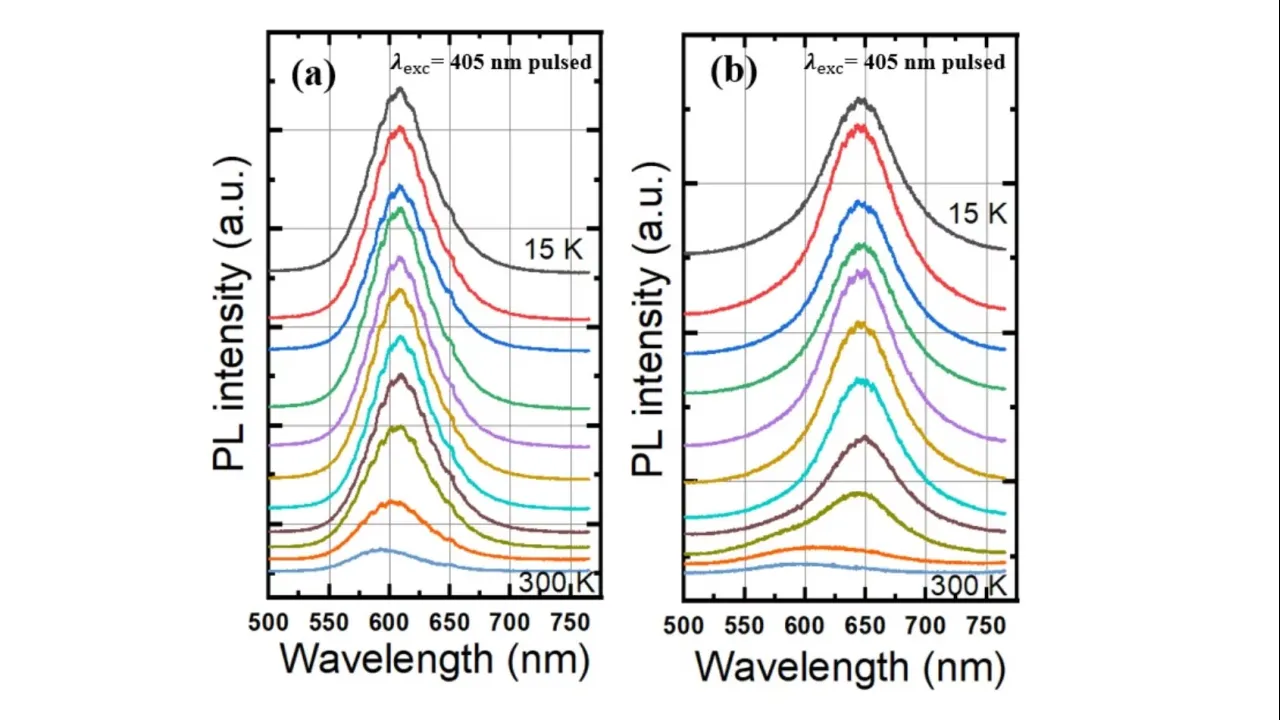
Paper accepted in Applied Physics Letters!
In this work, we present the characterization of red InGaN/GaN multiple-quantum-well (MQW) light-emitting diode (LED) structures. The results of photoluminescence (PL) studies show that a thicker n-GaN layer is beneficial for obtaining higher In-content for red MQWs. Our findings imply that in order to achieve high-efficiency InGaN MQWs for red emission, enhancing the uniformity of In-content distribution in the active region and decreasing non-radiative recombination centers are critical challenges.
About
[Abstract] In this work, we present the characterization of red InGaN/GaN multiple-quantum-well (MQW) light-emitting diode (LED) structures. The optical properties of two MQW structures with different n-GaN underlayer thicknesses (4 and 8 μm) are studied and compared. The results of photoluminescence (PL) studies show that a thicker n-GaN layer is beneficial for obtaining higher In-content for red MQWs.
However, the sample with a thicker n-GaN layer has a poorer internal quantum efficiency (IQE), a larger full width at half maximum (FWHM), and a shorter nonradiative recombination time, implying that there are stronger In-content fluctuations and more defects. Furthermore, red MQWs with higher In-content are shown to exhibit more deep localized states. Our findings imply that in order to achieve high-efficiency InGaN MQWs for red emission, enhancing the uniformity of In-content distribution in the active region and decreasing non-radiative recombination centers are critical challenges.

